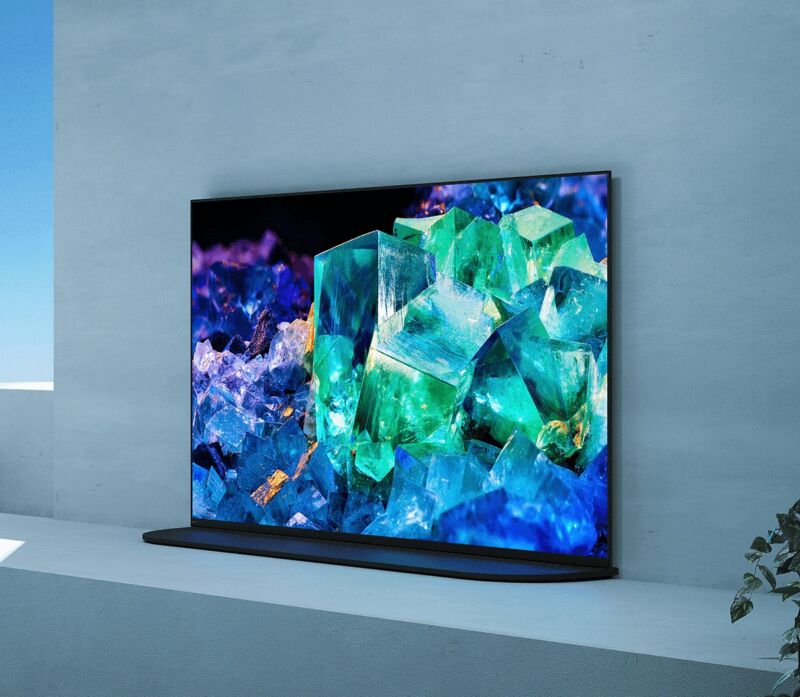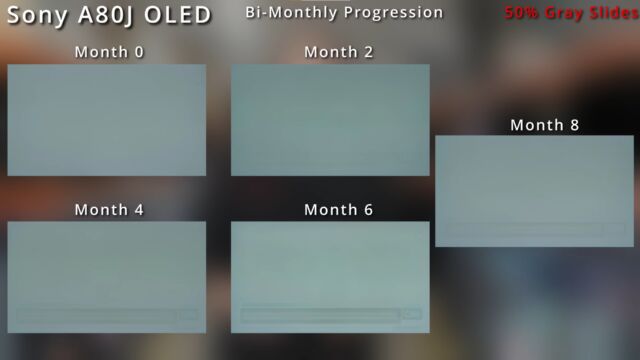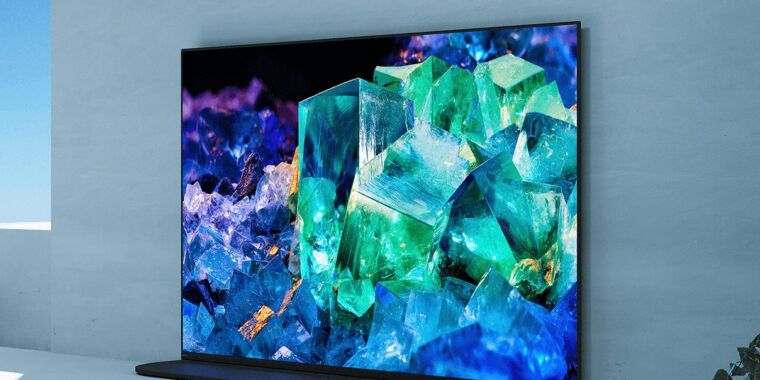
Picture retention is horrifying to see in your OLED TV however usually straightforward to eradicate. Many trendy OLED TVs subtly work their very own magic while you’re not watching to be able to take away the issue, as RTINGS demonstrated in a video launched Friday. Nevertheless, TV distributors aren’t all doing good jobs at implementing OLED screens’ compensation cycles.
Momentary picture retention differs from everlasting picture retention, aka burn-in, in that it factors to a change within the panel’s thin-film transistor (TFT) layer, slightly than degradation of the OLED layer. Untreated momentary picture retention would not result in burn-in, a Sony spokesperson confirmed to me, however anybody taking a look at a display screen affected by picture persistence will need to eradicate the sticky pictures, quick.
These momentary artifacts will be the results of warmth affecting the quantity of sunshine emitted by the OLED pixels and may occur inside minutes of utilization. However letting the TV settle down by turning it off often fixes this.
However the different kind of momentary picture retention, TFT threshold voltage shift, “is much more depending on the TV’s inner capabilities and downtime,” a RTINGS spokesperson stated in Friday’s video. RTINGS, which is presently working a high-use longevity take a look at of 100 TVs, defined that the “traits” of an OLED TV’s TFT layer can generally “drift,” inflicting momentary picture sticking.
“It may well take as little as one hour of on-time working with static components for this kind of picture retention to set in, however over time the picture retention accumulates,” RTINGS’ spokesperson stated.
Like the opposite kind of momentary picture persistence talked about, that is regular to see on an OLED TV. And it may be cleared with a brief compensation cycle.
Fixing momentary picture retention
Fortunately, at this time’s OLED TVs can run quick compensation cycles that tackle modifications to the TFT’s voltage with out interrupting the person, for the reason that cycles are set to mechanically run when the TV is off and has been used for a sure variety of cumulative hours. Recognized by numerous names, together with Pixel Refresh and Display Optimization, relying on the TV vendor, they often final underneath 10 minutes and “detect and compensate for modifications within the TFT layer’s electrical traits and return it to a baseline state,” as per RTINGS.
RTINGS used a 42-inch Sony A90K, a quantum dot OLED (QD-OLED) TV from 2021, as an instance a brief compensation cycle clearing momentary picture retention. The A90K reportedly suffered from momentary picture retention after RTINGS put it via a “torture take a look at,” that required it to run a CNN stream with a static overlay of the RTINGS brand and colourful squares for 120 hours.
This can be a good time to remind everybody that RTINGS is utilizing excessive testing circumstances. RTINGS’ typical longevity take a look at goals to simulate 10 years’ of use in two years, however the A90K’s testing right here is much more intense. It is unlikely a standard person would push a TV this tough.
As you’ll be able to see within the screenshot from RTINGS’ video beneath, a lot of the visible artifacts on the A90K went away after one quick compensation cycle run.
The subsequent screenshot video additionally helps show how efficient a brief compensation cycle will be at eradicating picture sticking. It exhibits Sony’s 2021 A80J white OLED (WOLED) TV with 50 % grey slides. After eight months, RTINGS ran a brief compensation cycle on the TV, and the distinction is noticeable.

Inconsistencies
Pixel refreshes which can be run whereas the TV is off can take away sticky pictures and save customers a lot concern. Nevertheless, RTINGS’ testing noticed inconsistencies round when quick compensation cycles auto-run amongst TVs from the identical model and even amongst TVs which can be the identical mannequin. The publication’s rep stated RTINGS “discovered quite a lot of buggy implementations, which can lead to extra picture retention showing in your display screen.”

